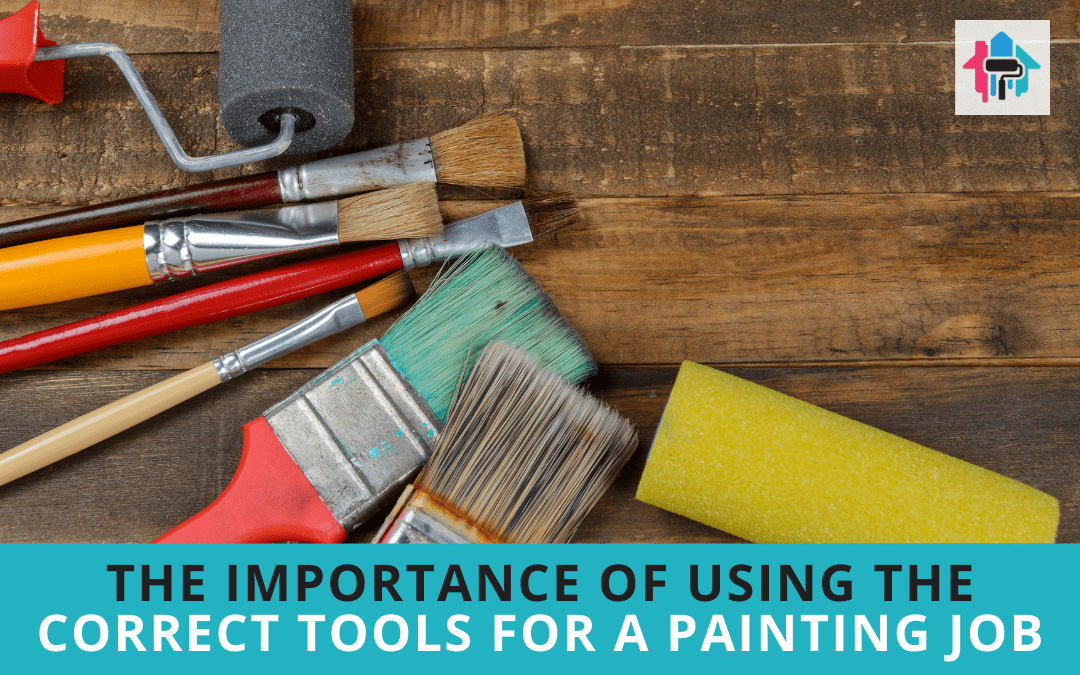Our Blogs
The Importance of Using the Correct Tools for a Painting Job
An excellent paint job does not only add life, appeal, and colour to your home, but it also raises the value of your property. Therefore, you must ensure that your home’s paint finish is properly done.
To ensure you’ll carry out and achieve polished paintwork, make sure you’re using proper tools. Read on and learn about the importance of using the correct tools or a painting job below.
Selecting the right paintbrush
Paintbrushes are one of the most important tools in both interior and exterior painting. However, they’re not all the same and one brush can’t be used for all types of application.
Using the wrong paintbrush may result in the brush losing its shape. If this happens, it’ll not be able to apply paint on the surface evenly. You may refer to the following brush and paint recommendation.
- Oil-based, varnishes, and primers: Use a medium-length, solid bristle natural brush.
- Acrylic and latex paints: Use a synthetic, long bristle brush.
Using the proper paintbrush for a certain type of paint is important as they have different results. For example, a synthetic, long bristle brush matches acrylic and latex paints because it’ll produce a smoother finish with its smooth bristles.
After knowing the type of paint and the brush that matches it, the next thing you need to know is the proper size of the paintbrush.
Choosing the correct brush size
The size of the paint job will determine the proper size of the paintbrush you need. Make sure to get the accurate size as the wrong size may slow down your painting process.
Each size of paintbrushes have different purposes such as the following:
- 12-25mm – good for touch up works and small jobs like timber trims
- 38mm – good for small panels, window frames, shutters, mouldings, furniture and downpipes
- 50mm – perfect for medium size work like screens, railings, doors and cabinets
- 63mm – perfect handy size for cupboards, eaves, doors and gutters
- 75mm – good for large works such as floorboards, fence posts, skirting and fascia, steps, and railings
- 100mm – perfect for large paint works such as roofs, ceiling, walls, floors, and fences
There are still other brushes for specific paint jobs like the cutter brush. This has a tapered edge tip which is ideal for accurately painting window frames, door cuttings, and feature walls. Its long handle provides easy accurate painting and precise stroke.
Picking the roller
Paint Brushes are not your only options for your paint job, especially if you’re working on large surfaces such as walls and ceilings. Rollers can make your paint job faster and easier. However, you need to consider the type of surface you’re working on and the finish you desire.
Choosing the right roller size
There are three different roller sizes. They include:
- Short roller – this is typically 5 to 8mm thick and perfect for glossy paints. It does not hold too much paint yet it provides a smooth finish.
- Medium roller – also known as an all-purpose roller with 8 to 12mm thickness and can be used to any type of paints. It delivers a soft finish on semi-smooth and smooth surfaces. It’s best recommended for water-based paints on walls and ceilings.
- Large rollers – this roller is 20-32mm thick and perfect for semi-rough and rough surfaces like masonry and bricks. It has good paint holding capacity and provides full coverage even on damaged and textured surfaces.
After knowing the roller size, next to consider is the roller’s material.
Choosing the right roller’s material
- Lambswool – for rough surfaces like brickwork and cement render
- Foam – for smaller areas like cupboards with the use of full and semi-gloss enamel paint
- Woven polyester – fit for all type of paints
- Knitted polyester – suitable for water-based paints on semi-smooth and smooth surfaces like cement render and wallboards
- Mohair – good for full and semi-gloss enamel paints on smooth areas. This is also ideal for epoxy resin, fibreglass, and polyurethane coating.
- Textured – perfect for textured coatings such as coarse, medium, and fine coverings
- Micro fibre – typically used for water-based, and acrylic enamel paints
Make sure to take note of the roller’s material and its suitability to the paint and surface you’ll use it for. Just like in choosing the right brush, selecting the right roller affects the quickness of your work and the result of the finishing.
Opt for rollers when you’re working on ceiling and walls that’ll be hard to reach. A general rule to follow when it comes to using paint rollers is, rollers with a short nap is for smooth surfaces, while rollers with a long snap are for rough surfaces.
When to call a professional painter
Each tool such as paintbrushes and paint rollers have a precise design for specific uses. Therefore, using the correct tool for your specific painting finish will help you get the job done right. It’ll lessen the possibilities of damaging the equipment and surface your working on.
Knowing the importance of using the correct tools will save you from spending on the wrong materials. Consequently, you’ll be able to get the right outcome you desire.
However, DIY painting may take a lot of your time and effort, especially if you’ll be working in a large area like walls and ceilings. Therefore, calling a professional painter is the best option. They have the proper skills, training, tools, and equipment which can help achieve professional paint job results.
To make your home stand out and truly level up its value, call Delux painting to do your painting finish. We have professional painters and the proper tools to ensure we’ll produce professional painting results.
Send us a message and book our professional painters for an appointment. Otherwise, call us on 0432 796 654.

